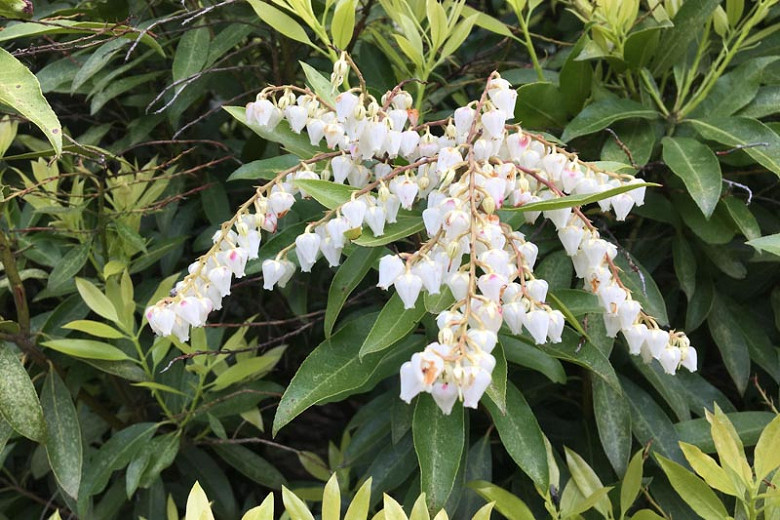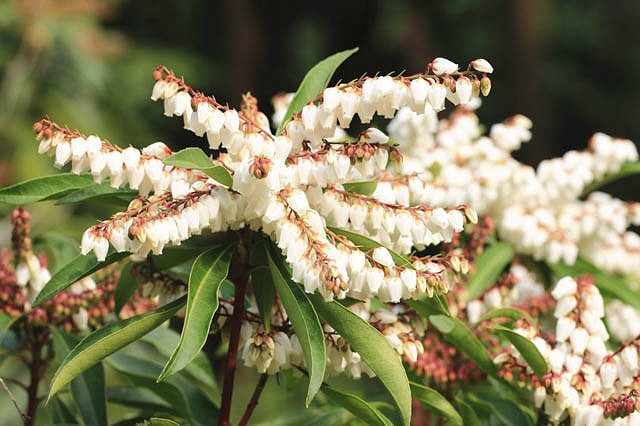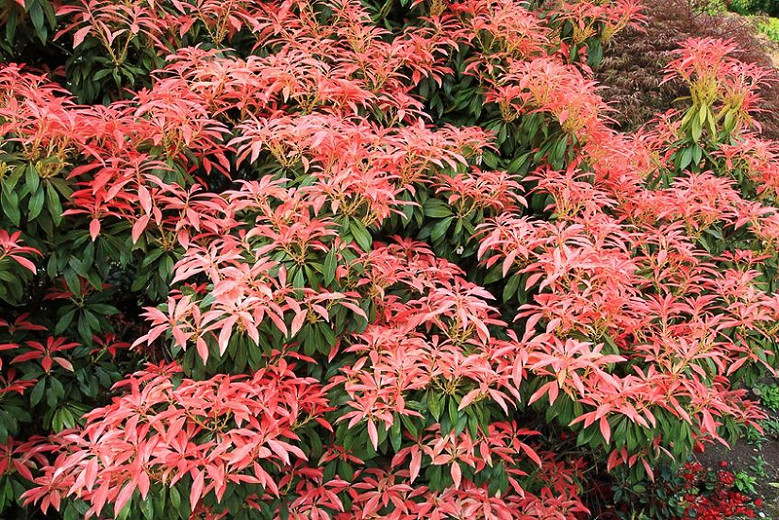Pieris floribunda (Mountain Andromeda)
Pieris floribunda (Mountain Andromeda) is a dense, bushy, evergreen shrub that provides desirable winter interest, abundant spring blooms and a delightful foliage which holds its color across the seasons. Conspicuous flower buds form in the fall and are held erect through the winter, turning progressively greenish-white. In the spring, they open to urn-shaped, creamy white flowers. Borne in upright pyramidal clusters, they attract bees and bumblebees.
Pieris floribunda (Mountain Andromeda) is a dense, bushy, evergreen shrub that provides desirable winter interest, abundant spring blooms and a delightful foliage which holds its color across the seasons. Conspicuous flower buds form in the fall and are held erect through the winter, turning progressively greenish-white. In the spring, they open to urn-shaped, creamy white flowers. Borne in upright pyramidal clusters, they attract bees and bumblebees. The blossoms contrast nicely with the foliage of oval, glossy, deep green, leathery leaves. Cold-hardy, Mountain Andromeda resents high temperature and humidity. Native to the eastern United States, it is an excellent specimen shrub or accent in well-drained acidic soils.
- Grows up to 4-6 ft. tall (120-180 cm) and 3-4 ft. wide (90-120 cm).
- Performs best in part shade in moist, acidic, well-drained soils. Tolerates full sun, but needs some protection in winter to avoid winter burn. Shelter from strong winds.
- Great as a specimen plant, flowering hedge, for shrub borders and foundation plantings.
- No serious pest or disease issues. Stem rot disease may occur in poorly-drained soils.
- Propagate by seed, cuttings (difficult) or rooting.
- Ingestion may cause tingling sensation, salivation, nose and eyes watering, nausea, vomiting, sweating, abdominal pain, headache, weakness, convulsions.
- Toxic to dogs, toxic to cats, toxic to horses, toxic to humans.
- Native to the eastern United States, primarily the southern Appalachian Mountains in the States of Tennessee, North and South Carolina, Georgia, Virginia and West Virginia.
Requirements
| Hardiness | 5 – 8 |
|---|---|
| Heat Zones | 5 – 8 |
| Climate Zones | 2, 2A, 2B, 3, 3A, 3B, 4, 5, 6, 7, 8, 9, 14, 15, 16, 17 |
| Plant Type | Shrubs |
| Plant Family | Pieris |
| Exposure | Full Sun, Partial Sun |
| Season of Interest | Spring (Early,Mid,Late)FallWinter |
| Height | 4' – 6' (120cm – 180cm) |
| Spread | 3' – 4' (90cm – 120cm) |
| Spacing | 36″ – 48″ (90cm – 120cm) |
| Water Needs | Average |
| Maintenance | Low |
| Soil Type | Loam, Sand |
| Soil pH | Acid, Neutral |
| Soil Drainage | Moist but Well-Drained |
| Characteristics | Fragrant, Showy, Evergreen |
| Native Plants | United States, Northeast, Vermont, Southeast, Georgia, North Carolina, South Carolina, Tennessee, Virginia, West Virginia |
| Tolerance | Deer |
| Attracts | Bees, Birds |
| Garden Uses | Beds and Borders |
| Garden Styles | Informal and Cottage |


